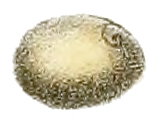Flat pebblesnail facts for kids
Quick facts for kids Flat pebblesnail |
|
|---|---|
 |
|
| An 1870 drawing of the shell of Lepyrium showalteri | |
| Conservation status | |
| Scientific classification | |
| Kingdom: | |
| Phylum: | |
| Class: | |
| (unranked): |
clade Caenogastropoda
clade Hypsogastropoda clade Littorinimorpha |
| Superfamily: |
Rissooidea
|
| Family: |
Lithoglyphidae
|
| Subfamily: |
Lithoglyphinae
|
| Genus: |
Lepyrium
W. H. Dall, 1896
|
| Species: |
L. showalteri
|
| Binomial name | |
| Lepyrium showalteri (I. Lea, 1861)
|
|
| Synonyms | |
|
Neritina showalteri Lea, 1861 |
|
The flat pebblesnail (Lepyrium showalteri) is a tiny freshwater snail that lives in rivers. It's a type of mollusk with a unique shell. This snail is very special because it's found only in the United States, mainly in Alabama. Sadly, it's an endangered species, meaning it's at risk of disappearing forever. It has been on the endangered species list since 1998. The flat pebblesnail is the only known species in its group, called Lepyrium.
Contents
What Does It Look Like?
The flat pebblesnail is a small snail, but it has a big, special-looking shell. Its shell is quite flat and wide, not tall and pointy like some other snails. It has a "depressed spire," which means the top part of the shell is pushed down. The main part of the shell, called the "body whorl," is expanded and flattened.
These shells are oval-shaped and flat. They usually grow to be about 3.5 to 4.4 millimeters (0.1 to 0.2 inches) tall and 4 to 5 millimeters (0.2 inches) wide. The shell has no opening in the center (called the umbilical area). It has 2 to 3 whorls (the turns of the shell) that get bigger quickly.
Who Discovered It?
The flat pebblesnail was first described by a scientist named Isaac Lea in 1861. He originally called it Neritina showalteri. He named it after Dr. E. R. Showalter, who found the snail in the Coosa River in Shelby County, Alabama.
Where Does It Live?
This snail is found only in Alabama in the United States. It used to live in several rivers:
- The main Coosa River in Shelby and Talladega counties.
- The Cahaba River in Bibb and Dallas counties.
- The Little Cahaba River in Bibb County, Alabama.
However, the flat pebblesnail has not been seen in the Coosa River since dams like the Lay Dam and Logan Martin Dam were built. Scientists have looked for it, but they haven't found any living groups outside of the Cahaba River area.
Today, the flat pebblesnail is only known from two places:
- One spot on the Little Cahaba River in Bibb County, Alabama.
- A single area of rocky rapids on the Cahaba River in Shelby County, Alabama.
-
Bibb County, Alabama (marked red) where the species is found in the Little Cahaba River.
-
Shelby County, Alabama (marked red) where the species is known from the Cahaba River.
Ecology and Life Cycle
We don't know a lot about the daily life of the flat pebblesnail. These snails like to attach themselves to clean, smooth stones in fast-moving parts of river rapids. They lay their eggs in small capsules on hard surfaces. It seems that most flat pebblesnails live for about 1 year.
See also
 In Spanish: Lepyrium showalteri para niños
In Spanish: Lepyrium showalteri para niños




